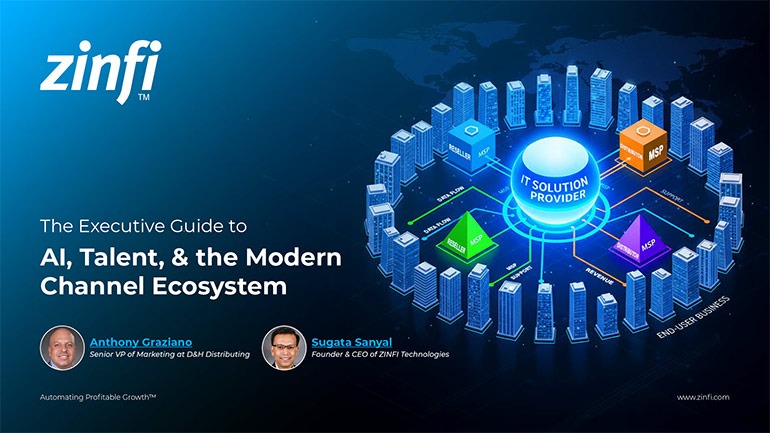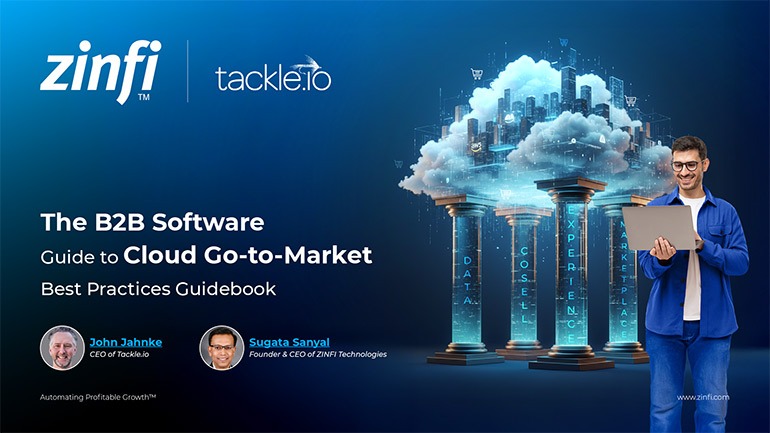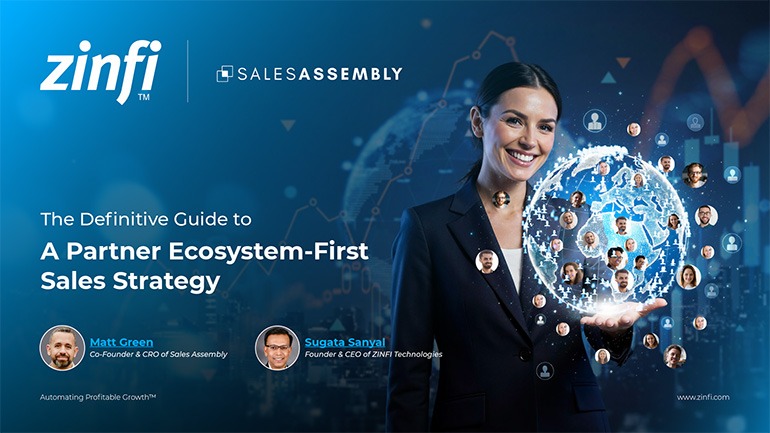Best Practices Articles

Lead Management Using Channel Marketing Software
More and more vendors are focused on an indirect sales (channel) model. Beyond the initial stages of fulfilment and support engagement, a major activity for these vendors is lead management. Channel marketing software can be a big help when it comes to lead generation and management. In this article, we will explore a variety of lead generation and management techniques that companies can pursue using channel marketing software.
Channel marketing software focuses on three core sets of activities: marketing to partners, marketing through partners and marketing with partners. The latter two activities are focused primarily on lead generation, which typically entails generating demand from a partner’s installed base of customers or getting new prospects into the partner’s and company’s pipeline.
We will explore in more detail the tactics partners can use to drive lead generation from their installed base and net new prospect segments. But before we do that, let’s take a few minutes to consider some tactics channel marketing software should be used for based on average selling price, solution complexity and market segments.
- Small business (100 employees or fewer): Small businesses purchases tend to be owner- or CEO-driven. Assuming average revenue is around $100,000 to $150,000 per employee, the revenues for these organizations range from about $1 to $15 million. Companies of this size tend to engage in less structured buying as opposed to on-demand or needs-based buying. Many small businesses also tend buy based on relationships. Selling into these segments means staying connected. Standard tactical tools offered by channel marketing software platforms—like social, syndication and email platform—tend to be quite effective.
- SMB market segment (100–500 employees): As a company grows and revenue starts to fall into the $10 to $100 million range, processes evolve. Most purchases in this segment fall into two categories: scheduled maintenance or strategic investments. Most transactional purchases in this segment are driven by price and quality, while strategic investments tend to rely on overall solution complexity. Partners selling transactional products tend to do poorly in this segment, because most companies buy directly based on pre-agreed pricing for things that they need–whether it’s gloves for hospital staff, coffee for morning breaks or paper for printing. Strategic purchases, on the other hand, are driven by partner competencies, so event-based channel marketing software tools facilitating activities like webinars and road shows tend to come in handy here.
- Mid-market (500–2,500 employees): Revenues for these companies are in the $100 to $500 million range. Most purchases are planned and reserves are maintained. Very rarely do these companies seek new vendors in mature categories and purchase. However, in emerging industry segments, new vendors—and therefore new resellers—can participate in a request for proposal (RFP) process and thereby get a foot in the door. Channel marketing software in this category can help build reach through continuous marketing via social media and syndication of thought leadership content, followed by tactical campaigns for opt-in email, microsites and events. Online advertising on LinkedIn and Google AdWords can also drive traffic from this segment in a focused way. LinkedIn campaigns tend to fare better with narrowcasting, while Google AdWords tend to work well with broadcasting campaigns.
- Large enterprise (2,500–10,000 employees): Many of these companies grow through acquisitions, because the kind of organic growth that companies like Google, Facebook, Tesla and others have achieved is hard to come by. During acquisitions, companies actually reduce the number of vendors they work with and tend to target their preferred vendor list for transfer of purchases. This is a classic installed base marketing scenario, and regular newsletters, webinar-driven education, white papers, video case studies and similar marketing approaches provide essential content that can be efficiently delivered using channel marketing software.
- Very large enterprises (more than 10,000 employees): This segment behaves in a way that is quite similar to the large enterprise segment. However, in many categories a customer of this size may prefer to have primary, secondary and tertiary suppliers to mitigate supply risk. Therefore, depending on the nature of the purchase—transactional or solutions-driven—the tactics involved using channel marketing software vary considerably.
I am well aware if you are selling to a broad marketplace that includes small businesses, very large enterprises and everything in-between, developing a targeted approach to lead management may seem daunting. My best suggestion is to start with campaigns that can support your broad-line product categories—the products and solutions you sell the most and the customers to whom you sell the most. Momentum drives sales. If you already have momentum in a category, chances are your partner base will be able to drive additional demand to generate better ROI using channel marketing software loaded with the right content. Instead of trying to go after all segments, it’s best to start with what sells best and then fan out in a measured, logical fashion.
There are two other dimensions every marketer needs to consider in their approach to lead generation and management: the types of products you are selling and the market verticals you are selling to.
- Vertical campaigns: Just like people, market segments follow an adoption model. Technology, healthcare, finance and similar industries tend to be early adopters of technologies and solutions, while government, education, agriculture and other segments tend to lag. (Manufacturing, construction, real estate, etc., are somewhere in the middle.) When you are setting up campaigns in your channel marketing software, be aware of the market adoption tendencies of your customer base. Your partners won’t be able to change market adoption dynamics. They can only capture what is out there or who is out there looking. Therefore, trying to push a state-of-the-art storage technology solution in agriculture may not be your best bet. Be realistic. Following your end-user-driven purchase patterns is crucial to getting better ROI from your channel marketing software and associated investments.
- Transactional vs. solutions campaigns: If you are selling french fries that go with burgers but don’t sell burgers, you need to find someone who sells burgers so you can bundle in those french fries. However, if you are a diner and can sell burgers and steaks or many sides along with an Oreo milkshake, then you can have a lot more power running as many campaigns you want. This is where alliance partnerships come in. “Intel Inside ” is a classic example of this dynamic in the technology space. There are many examples of bundled-solutions versus standalone-product marketing in all segments. For instance, a bank might not sell insurance, but it can co-market to its customer base with an insurance provider. As you pull campaigns together and load them in your channel marketing software platform, you need to think through what goes with what; otherwise, your campaigns won’t have the desired impact on potential buyers.
I hope I’ve demonstrated that when channel marketers think through who they are targeting, how they buy, and what they are buying, and appropriately align campaign content with tactics, they can enable partner success in generating leads, either from their installed base or from net new prospects. Over the past few decades marketing has become a science, and channel marketing brings in another layer of complexity to this newly emerging science. However, with the right channel marketing software you can run campaigns across a diverse partner base, run analytics to see what is working, and build out a much better go-to-market strategy for your campaigns and content across market verticals, different market segments and partner competencies to maximize your ROI.
For more information, please check this article.
Best Practices Guidebook
 Modernizing Channel Marketing: AI and Ecosystem Enablement Best Practices
Modernizing Channel Marketing: AI and Ecosystem Enablement Best PracticesDownload for FREE
 The Channel’s Shift to Partner-Led With AI Best Practices
The Channel’s Shift to Partner-Led With AI Best PracticesDownload for FREE
 Hyperscalers, ISVs, and AI: Shaping the Future of B2B Software Distribution
Hyperscalers, ISVs, and AI: Shaping the Future of B2B Software DistributionDownload for FREE
 Definitive Guide to a Partner Ecosystem-First Sales Strategy
Definitive Guide to a Partner Ecosystem-First Sales StrategyDownload for FREE
 The Partner-Led Digital and AI Transformation Best Practices
The Partner-Led Digital and AI Transformation Best PracticesDownload for FREE
 Startup Talent Recruitment: Hiring Missionaries, Not Mercenaries
Startup Talent Recruitment: Hiring Missionaries, Not MercenariesDownload for FREE
 The Future of Partner Relationship Management with AI in Partnerships
The Future of Partner Relationship Management with AI in PartnershipsDownload for FREE
 Cybersecurity for the 99%: Strategies from the Frontline
Cybersecurity for the 99%: Strategies from the FrontlineDownload for FREE
 Mastering Partner Relationships: A Strategic Approach to Business Growth
Mastering Partner Relationships: A Strategic Approach to Business GrowthDownload for FREE
 Mastering Partner Relationship Management: Keys to SaaS Channel Success
Mastering Partner Relationship Management: Keys to SaaS Channel SuccessDownload for FREE
 Navigating the AI Revolution: Guide for Partners in the Microsoft Ecosystem
Navigating the AI Revolution: Guide for Partners in the Microsoft EcosystemDownload for FREE
 Mastering the Modern Buyers Journey: Sales Leader’s Guide to AI & Engagement
Mastering the Modern Buyers Journey: Sales Leader’s Guide to AI & EngagementDownload for FREE










